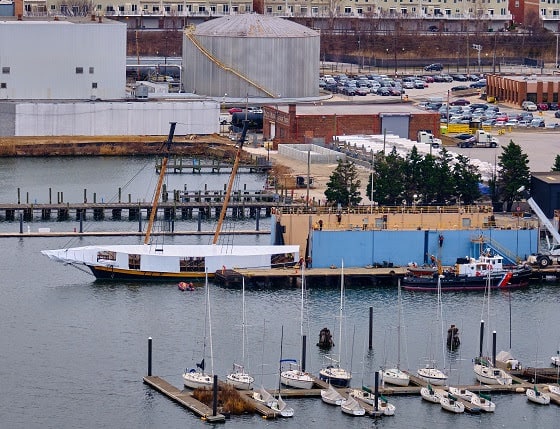As the people who make their living on the Chesapeake Bay work to recover from the blow delivered by the COVID-19 pandemic, Maryland Governor Larry Hogan is making an appeal for the feds to bring more seasonal seafood workers to the state.
In a letter to the new U.S. secretaries of Labor and Homeland Security, Governor Hogan asks for “immediate action to eliminate the unfair lottery system” and increase the number of H-2B Nonimmigrant Temporary Worker Program visas from its current cap of 66,000 nationwide. Hogan calls on Homeland Security Secretary Alejandro Mayorkas and Labor Secretary Marty Walsh to fix a “failed federal policy” that allows some crab picking houses to bring in enough workers, while others face shortages.
Commercial crabbing season began April 1. Governor Hogan says it takes 450 seasonal workers to process blue crab at Maryland’s 23 crab picking houses. And citing University of Maryland research, he says every H-2B temporary worker in crab processing helps create an average 2.5 jobs for American citizens.
Under the current lottery system, some processors get workers, the letter says, but not others. Without enough labor, local seafood processors may not be able to operate, threatening the state’s $355 million seafood industry and impacting direct and indirect jobs.
A 2020 Maryland Department of Agriculture survey found that seven out of eight crab companies surveyed wouldn’t open without adequate H-2B workers. And without them, the survey showed that income for watermen could drop by $12.5 million, processors could lose more than $37 million in sales, and the overall hit to the state’s economy could be $100-$150 million.
The governor has made similar pleas to fix the visa system for the last several years, usually getting an eleventh-hour visa increase from the Department of Homeland Security. Last year, an additional 35,000 H-2B visas were released nationwide just weeks before the April 1 start of crab season.
Aubrey Vincent of Lindy’s Seafood on Hoopers Island says they were “fortunate” to have about 70 percent of the needed workforce last year, and thus, were able to operate. But Vincent tells Bay Bulletin, six other plants were unable to operate at all.
In rural areas, locals aren’t interested in doing seasonal work, Vincent says. “On the processing side, we rely on the visa workers entirely. We don’t have new people deciding to pursue crab picking skills. We haven’t seen that for 20-30 years.”
Seafood sellers like Vincent and Governor Hogan are all calling for not just short-term release of visas, but long-term solutions from Congress. Vincent says places like Fishing Creek on Hoopers Island—where the crab industry virtually supports the entire community—have had the same kind of labor shortages for decades. The additional visas need to be a permanent thing, instead of a last-ditch plea every year, the governor and Vincent say: the same number of visas have been requested every year.
-Meg Walburn Viviano




